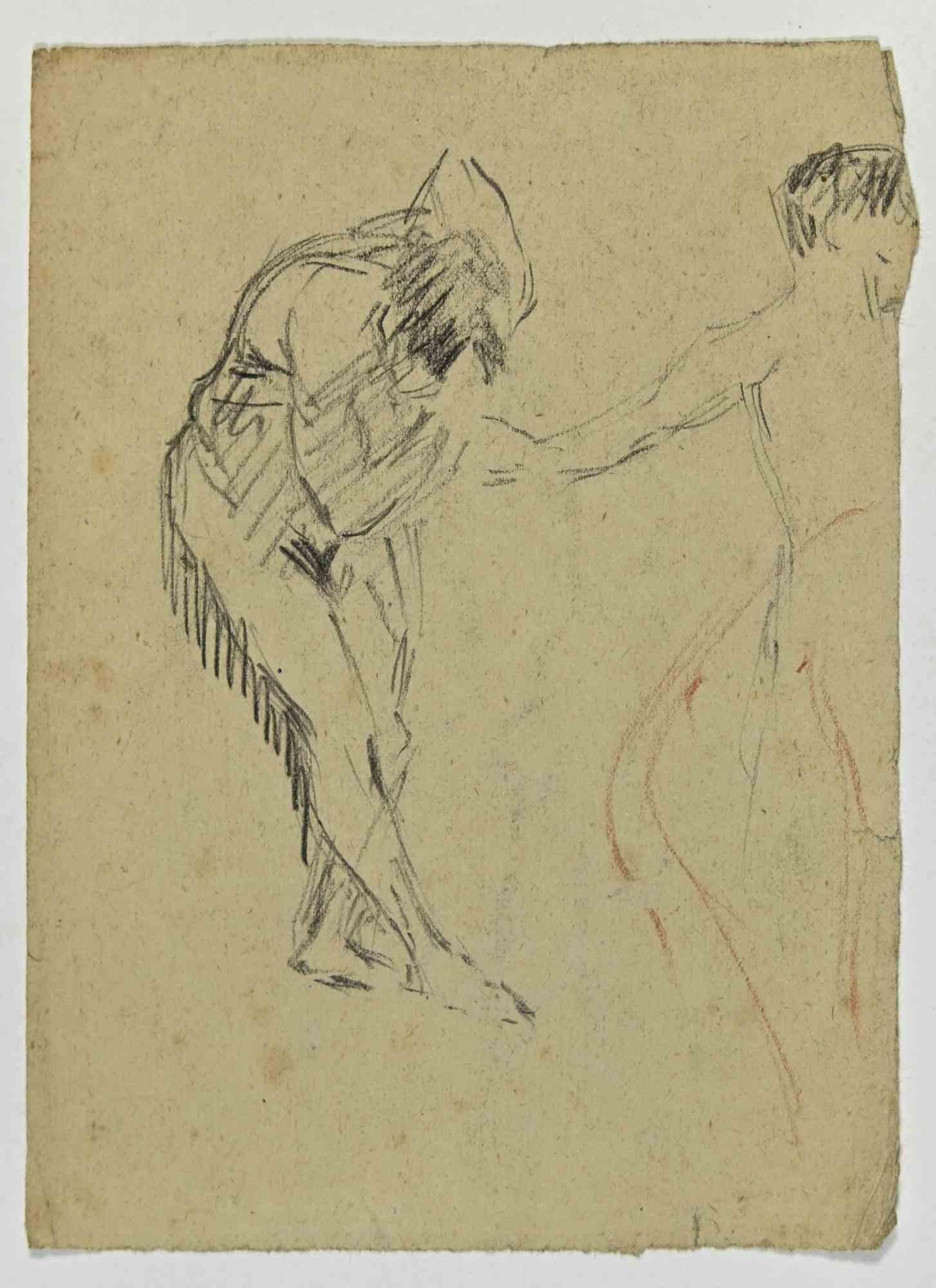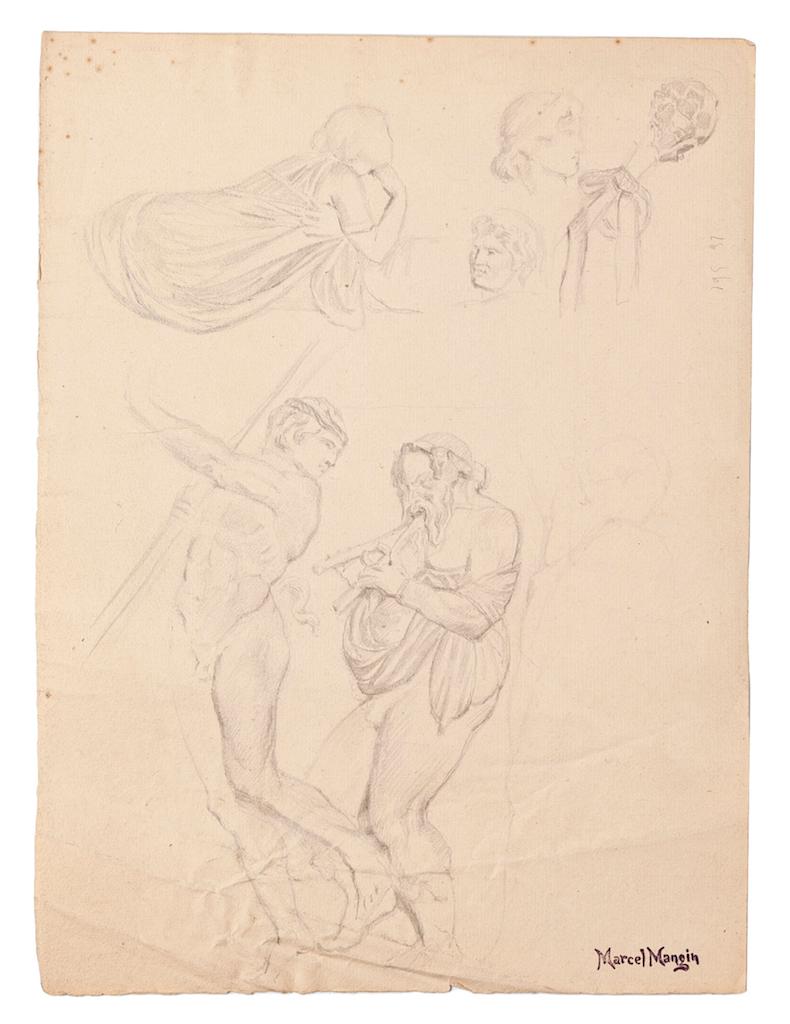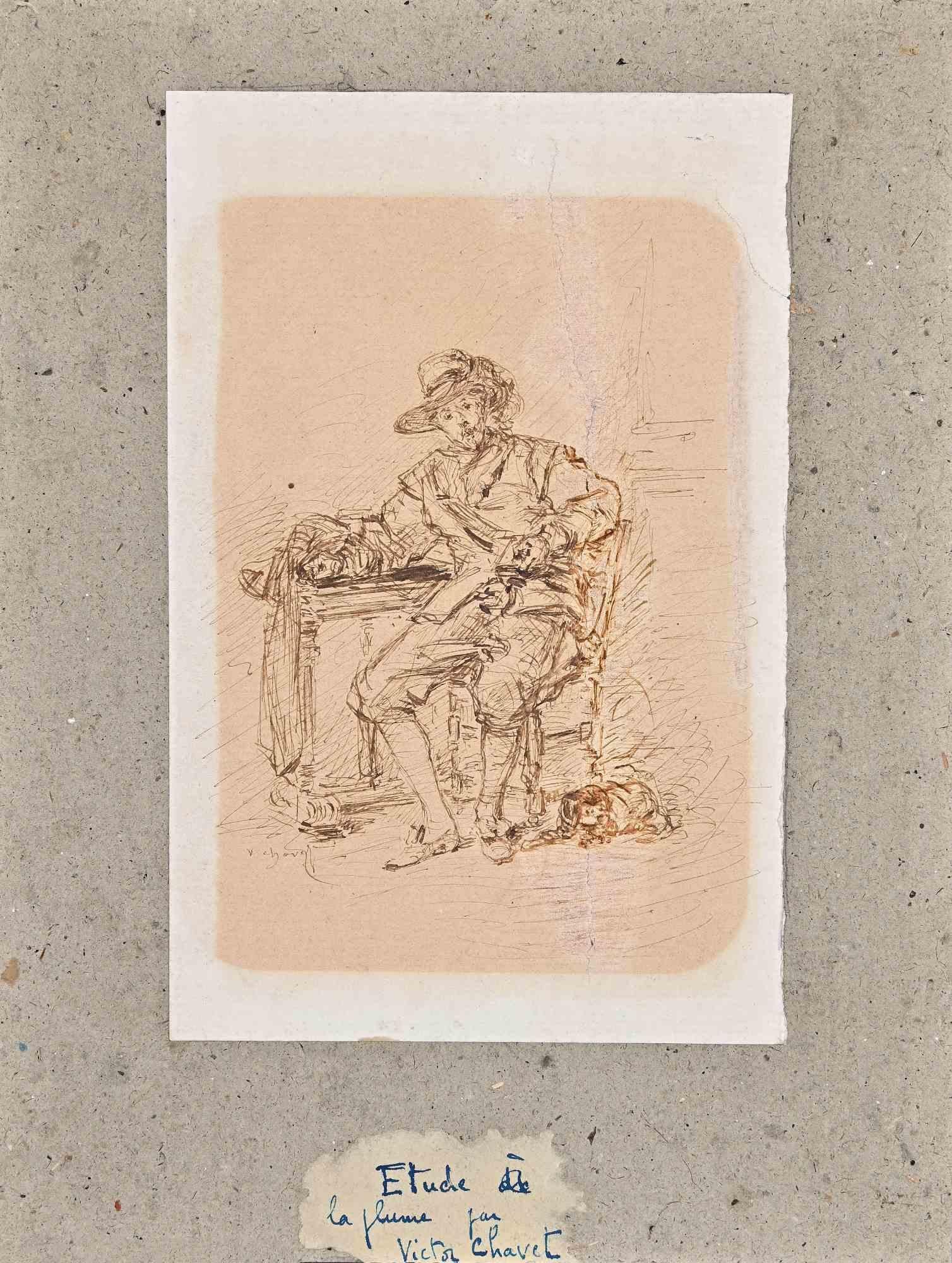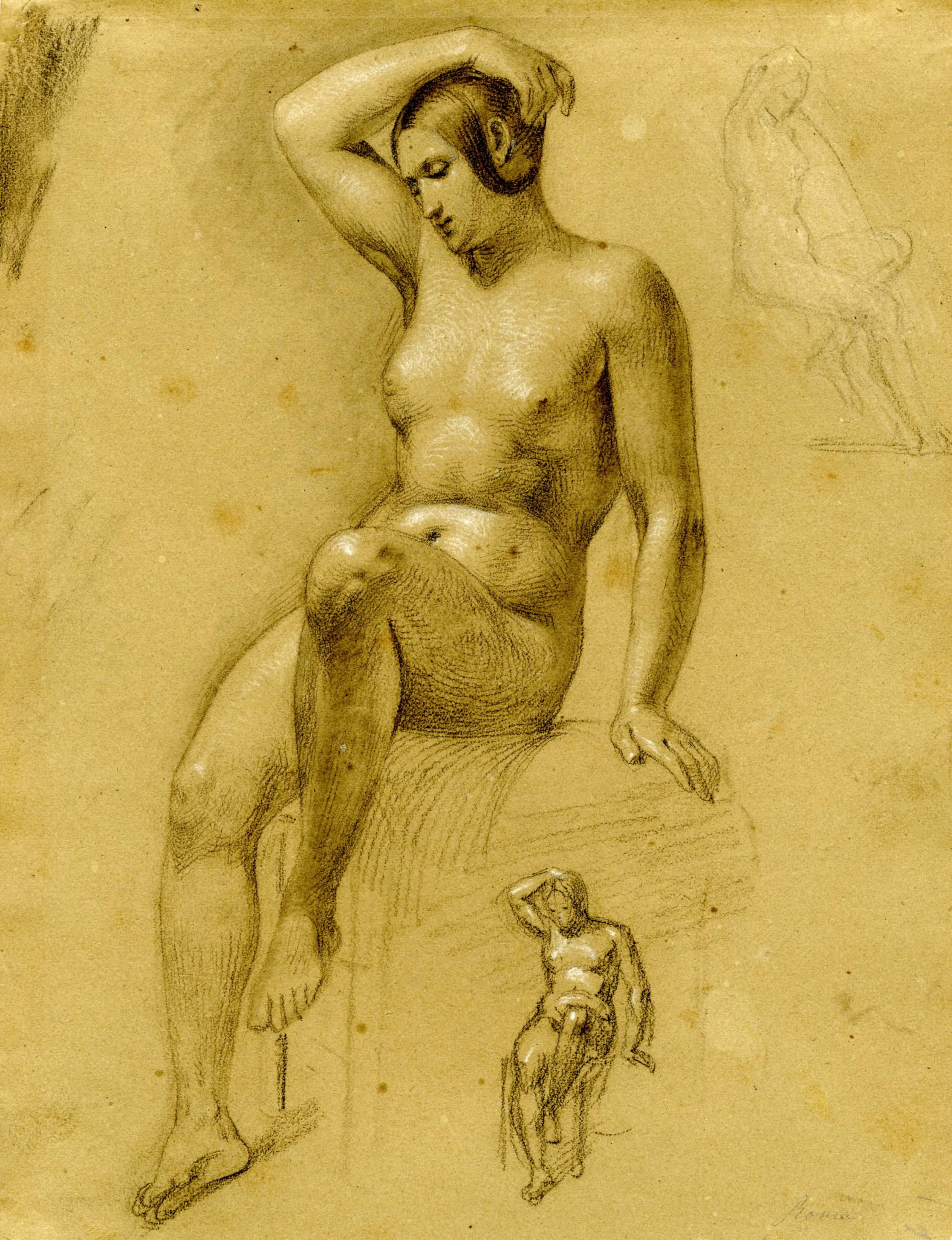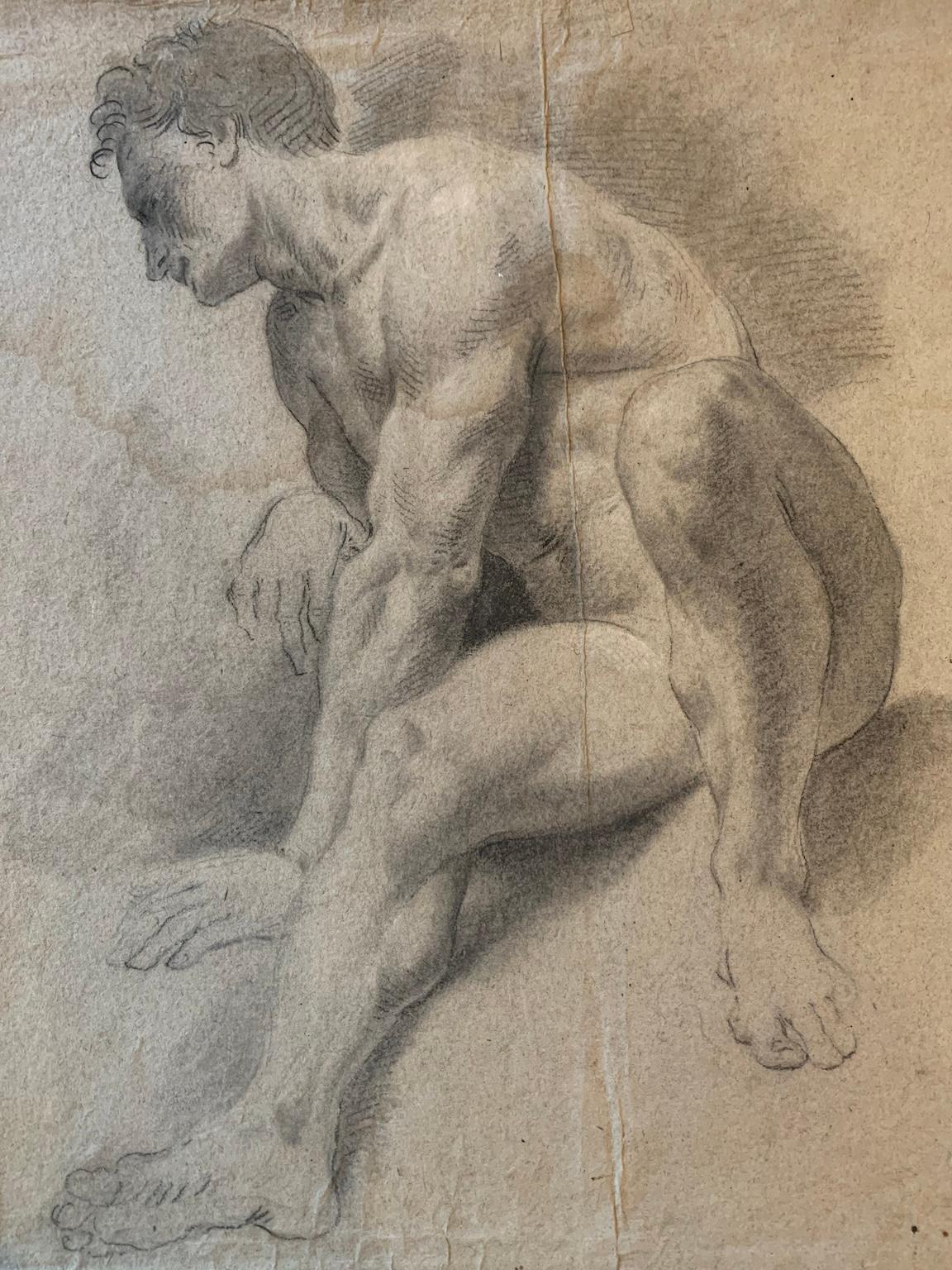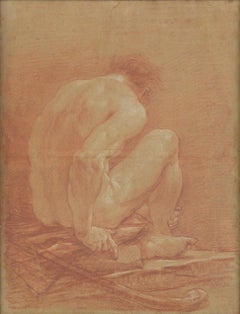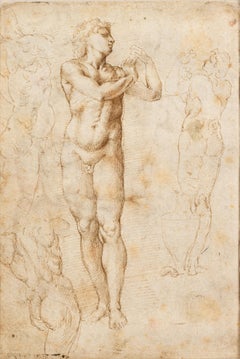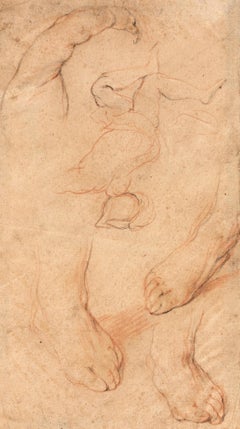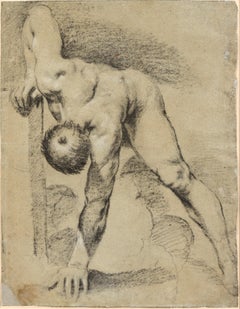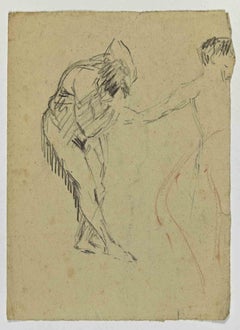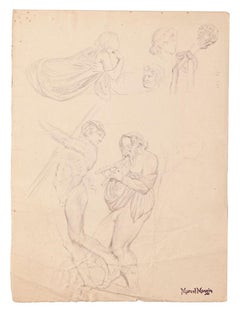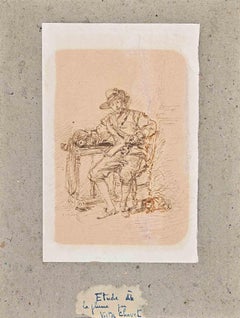Items Similar to Studies of seated figures
Want more images or videos?
Request additional images or videos from the seller
1 of 3
Giuseppe BOSSIStudies of seated figurescirca 1807
circa 1807
$6,000
£4,535.26
€5,211.82
CA$8,354.96
A$9,294.55
CHF 4,872.32
MX$113,577.18
NOK 62,042.94
SEK 58,404.84
DKK 38,904.23
Shipping
Retrieving quote...The 1stDibs Promise:
Authenticity Guarantee,
Money-Back Guarantee,
24-Hour Cancellation
About the Item
GIUSEPPE BOSSI
(1777-1815)
Studies of seated figures
Pen and ink on paper
18 x 14 cm
Provenance:
Private collection, France
Giuseppe Bossi was an Italian Neoclassical painter, draughtsman, and writer, known for his drawings and for his significant role in the artistic circles of Milan. He was director of the Brera Academy of Fine Arts in Milan. He was highly influenced by classical antiquity, Renaissance art, and the work of Leonardo da Vinci and Raphael, whom he admired greatly. Bossi's artistic output includes not only paintings but also a substantial number of drawings, many of which were executed in pen and ink.
As a draughtsman, Bossi's pen and ink drawings demonstrate his fascination with line, form, and the classical ideals of beauty. He was deeply involved in the intellectual and cultural revival of Neoclassicism in Italy during the late 18th and early 19th centuries. Pen and ink were ideal mediums for Bossi to showcase his masterful line work. His drawings are characterized by clean, precise lines, with a careful attention to the contours of the human form. The linear clarity and control in his work reflect the influence of Raphael and the Renaissance masters, who were known for their mastery of draftsmanship.
In this sketch, Bossi explores human forms through two crouched figures, rendered with quick and fluid ink strokes. The drawing demonstrates his mastery of gesture and the simplicity with which he captures the bodily tension and introspection of the subjects. Despite the apparent spontaneity of the lines, each one seems thoughtfully placed to convey form, while maintaining an effortless execution. This pen and ink drawing features male figures, rendered with careful attention to musculature and proportion.
Like many Neoclassical artists, Bossi was deeply invested in the study of anatomy and the human figure. These figures, curled in on themselves, may reflect an exploration of the human condition, a central theme in Neoclassicism, which focused on ideals of beauty and truth. This type of preparatory study, often created alongside more elaborate compositions, reveals Bossi's emphasis on anatomical structure and the intimate expression of emotions through the body.
In addition to his technical skill, this pen and ink drawing conveys a strong sense of emotion. These figures are shown in dynamic poses, with expressive gestures that convey the drama or pathos of the moment. Bossi had a talent for using the expressiveness of line to capture subtle emotions, particularly in the poses.
Bossi’s pen and ink drawings often served as academic exercises, particularly in his exploration of anatomy and composition. Many of these studies were used as preparation for larger works, helping him refine the proportions and arrangements of his figures. There are stylistic comparisons to be made between the present Studies of seated figures and Bossi’s drawings below:
• Studies of four seated figures, pencil, pen and brown ink, brown wash on vellum, 19.6 x 26.2 cm, Karl & Faber, 10 May 2019, lot 196;
• Studies of figures, pen and brown ink on paper, 11.5 x 14 cm, Porto & C., Milan, lot 114;
• Study for Bodoni's Apotheosis, pen and brown ink on paper, 21 x 15.5 cm, Finarte, Milan, lot 84.
Born in the town of Busto Arsizio, near Milan, Giuseppe Bossi studied at the Brera Academy of Fine Arts at Milan, and spent the years 1795 to 1801 in Rome, where he drew Roman remains and honed his skills in drawing anatomy at the morgue of a hospital and formed an intimate friendship with Canova, who made a portrait bust of Bossi. He met Jacques-Louis David in Lyon in 1802, though his own style employed a less rigorously classicizing technique.
On his return to Milan he fell in with the circle of progressive young artists that formed the Cameretta Portiana. He became assistant secretary, and then secretary (1802–1807) of the Brera Academy, whose collection of paintings, the Pinacoteca, he essentially founded. On the occasion of the visit of Napoleon to Milan in 1805, Bossi exhibited at the Pinacoteca a drawing of the Last Judgment of Michelangelo, and paintings representing Aurora and Night, Oedipus and Creon, and the Italian Parnassus. The Brera Academy owed to him its fine collection of casts of great works of sculpture acquired at Paris, Rome, and Florence. For himself, Bossi collected books, drawings, prints, paintings, coins, sculptures, and antiquities.
Bossi devoted a large part of his life to the study of the works of Leonardo, whose drawing manner he imitated accurately enough for his productions to have passed as Leonardos. His diary, 1807–1815, is a useful guide to the official artistic life of Napoleonic Milan. Bossi died at his home in Via S. Maria Valle, Milan. A monument by Canova was erected to his memory in the Biblioteca Ambrosiana, and a bust was placed in the Brera.
Bossi’s pen and ink drawings played an important role in shaping the Neoclassical movement in Italy. His precise, classical style reflected the intellectual aspirations of his time, which sought to revive the artistic ideals of ancient Greece and Rome. His technical mastery and dedication to classical principles earned him a prominent place in Milanese artistic circles, and his work had a lasting influence on the next generation of Italian artists.
While Giuseppe Bossi died relatively young, his contribution to the Neoclassical movement—especially through his drawings—remains significant. His works are studied and admired for their clarity of form, grace of line, and commitment to the ideals of beauty that defined Neoclassicism.
This sheet, although modest in size but characteristic of Bossi's preparatory sketches, draws us into the creative process of an artist in search of formal and emotional perfection, echoing the great Neoclassical aesthetic concerns of his time.
- Creator:Giuseppe BOSSI (1777 - 1815, Italian)
- Creation Year:circa 1807
- Dimensions:Height: 5.52 in (14 cm)Width: 7.09 in (18 cm)
- Medium:
- Movement & Style:
- Period:
- Condition:Unsigned.
- Gallery Location:Paris, FR
- Reference Number:1stDibs: LU2258215444442
About the Seller
No Reviews Yet
Vetted Professional Seller
Every seller passes strict standards for authenticity and reliability
Established in 2010
1stDibs seller since 2022
- ShippingRetrieving quote...Shipping from: Paris, France
- Return Policy
Authenticity Guarantee
In the unlikely event there’s an issue with an item’s authenticity, contact us within 1 year for a full refund. DetailsMoney-Back Guarantee
If your item is not as described, is damaged in transit, or does not arrive, contact us within 7 days for a full refund. Details24-Hour Cancellation
You have a 24-hour grace period in which to reconsider your purchase, with no questions asked.Vetted Professional Sellers
Our world-class sellers must adhere to strict standards for service and quality, maintaining the integrity of our listings.Price-Match Guarantee
If you find that a seller listed the same item for a lower price elsewhere, we’ll match it.Trusted Global Delivery
Our best-in-class carrier network provides specialized shipping options worldwide, including custom delivery.More From This Seller
View AllAcademy Study of a Seated Male Figure Seen from the Back
By Charles Joseph Natoire
Located in Paris, Île-de-France
Attributed to Charles-Joseph NATOIRE (Nîmes 1700 – 1777 Gandolfo)
Academy Study of a Seated Male Figure Seen from the Back
(Youthful study executed around the 1720s–1730s, likely du...
Category
1720s Old Masters Nude Drawings and Watercolors
Materials
Chalk
Studies of the Galli Statue and of an Ignudo
Located in Paris, Île-de-France
Florentine School, early 16th century
Studies of the Galli Statue and of an Ignudo
Pen and brown ink on laid paper
19.1 × 13 cm
Executed c. 1510–1520
Unsigned
This remarkable doub...
Category
16th Century Old Masters Nude Drawings and Watercolors
Materials
Ink
Study of Feet and a Figure Sketch
Located in Paris, Île-de-France
Attributed to Jacob JORDAENS (Antwerp 1593–1678)
Study of Feet and a Figure Sketch
Red and black chalk on laid paper
25.9 × 18.4 cm (10¼ × 7¼ in.)
Unsigned
Minor losses, folds, an...
Category
17th Century Old Masters Nude Drawings and Watercolors
Materials
Chalk
Leaning Nude Man (recto); Kneeling Man, Hands Tied Behind His Back (verso)
By Giovanni Francesco Barbieri (Il Guercino)
Located in Paris, Île-de-France
GIOVANNI FRANCESCO BARBIERI, known as GUERCINO
(1591-1666)
Leaning Nude Man (recto); Kneeling Man, Hands Tied Behind His Back (verso)
Black chalk heightened with white on light blu...
Category
1620s Old Masters Nude Drawings and Watercolors
Materials
Chalk, Charcoal
Studies of a kneeling female figure, an arm, a hand, and a head in profile
By Carlo Maratta (Ancona 1625 - Rome 1713)
Located in Paris, Île-de-France
Studio of Carlo Maratti (or Maratta)
Camerano 1625 – Rome 1713
Studies of a kneeling female figure, an arm, a hand, and a head in profile
Red chalk on paper
43.4 x 26.6 cm
Unsigne...
Category
Late 17th Century Old Masters Figurative Drawings and Watercolors
Materials
Chalk
Academy Drawing of a Man
Located in Paris, Île-de-France
Constance-Marie Charpentier (1767–1849)
Academy Drawing of a Man
Black and white chalk on paper
56 x 43 cm
Provenance:
Private collection
Constance-Marie Charpentier, a student of Jacques-Louis David, distinguished herself in late 18th- and early 19th-century Paris as a highly skilled portraitist. Despite the obstacles faced by female artists of her time, Charpentier gained recognition and was even awarded a gold medal at the 1814 Salon—a rare and significant honor. This work, a male nude academy...
Category
19th Century Old Masters Nude Drawings and Watercolors
Materials
Ink, Chalk
You May Also Like
Disegno figurativo ritratto femminile di maestro fiorentino del XX secolo
By Arcangelo Salimbeni
Located in Florence, IT
Il disegno, matita su carta 32 x 22.5 cm, raffigura una figura femminile che indossa un vestito con le maniche corte e la gonna che lascia intravedere le gambe, distesa su un fianco,...
Category
Mid-20th Century Contemporary Nude Drawings and Watercolors
Materials
Paper, Pencil
Figures - Drawing by Joseph Alexander Colin - Mid-20th Century
Located in Roma, IT
Figures is a drawing realized by Joseph Colin in the Mid-20th Century.
Pencil on ivory-colored paper
Good conditions with slight foxing.
The artwork is realized through deft expre...
Category
Mid-20th Century Modern Figurative Drawings and Watercolors
Materials
Pencil, Paper
Study of Figures- Drawing on Paper by Marcel Mangin - Late 19th Century
By Marcel Mangin 1
Located in Roma, IT
Study of Figures is original drawings on ivory paper, realized by Marcel Mangin (French, 1852 - 1915), with the stamp of artist"Marcel Mangin" on the low...
Category
Late 19th Century Figurative Drawings and Watercolors
Materials
Pencil
Study of Study of Figure - Drawing by Victor Chavet - Mid-19th Century
Located in Roma, IT
Study of Figure is a China ink Drawing realized in the mid-19th Century by Victor Chavet (1822-1906).
Hand-signed on the lower.
Glued on a hard Cardboard Passepartout: 28 x 21 cm, original one by the publisher, on the rear Stamped " Adolphe Legoupy, Paris"
Good condition with a repaired central part.
Victor Chavet (1822-1906) was a pupil of Pierre Révoil in Lyon then of Camille Roqueplan...
Category
Mid-19th Century Modern Figurative Drawings and Watercolors
Materials
Paper, Ink
Study of a Seated Woman and Two Smaller Studies of the Same
By Henirich Schwemminger
Located in Fairlawn, OH
Study of a Seated Woman and Two Smaller Studies of the Same
Unsigned
Annotated: "Roma" (Rome)
Black chalk heightened with white chalk on buff wove paper
Sheet size: 11 x 8 1/2 inche...
Category
19th Century Academic Nude Drawings and Watercolors
Materials
Chalk
Academy of seated nude of 19th century Italian school
Located in Florence, IT
Seated male nude that falls fully within the academic "model from life" production of the early 19th century, as also seems confirmed by the "Titus-like" hairdo of the effigy.
The s...
Category
Early 19th Century Other Art Style Nude Drawings and Watercolors
Materials
Paper, Pencil
More Ways To Browse
Old Master Italian Drawings
Drawings Italian 18th Century
Antique Roman Figures
Study Of A Male Nude
Renaissance 18th Century Painting
Old Master Sketch
Old Master Pencil Drawing
Antique Hospital
French Male Nude
Classical Male Nudes
French Academic Nudes
Large Neoclassical Painting
Italian Male Nude
Michelangelo David
Seated Nude Sculpture
Drawing Of Napoleon
Michelangelo Drawings
Male Nude Framed Portrait

